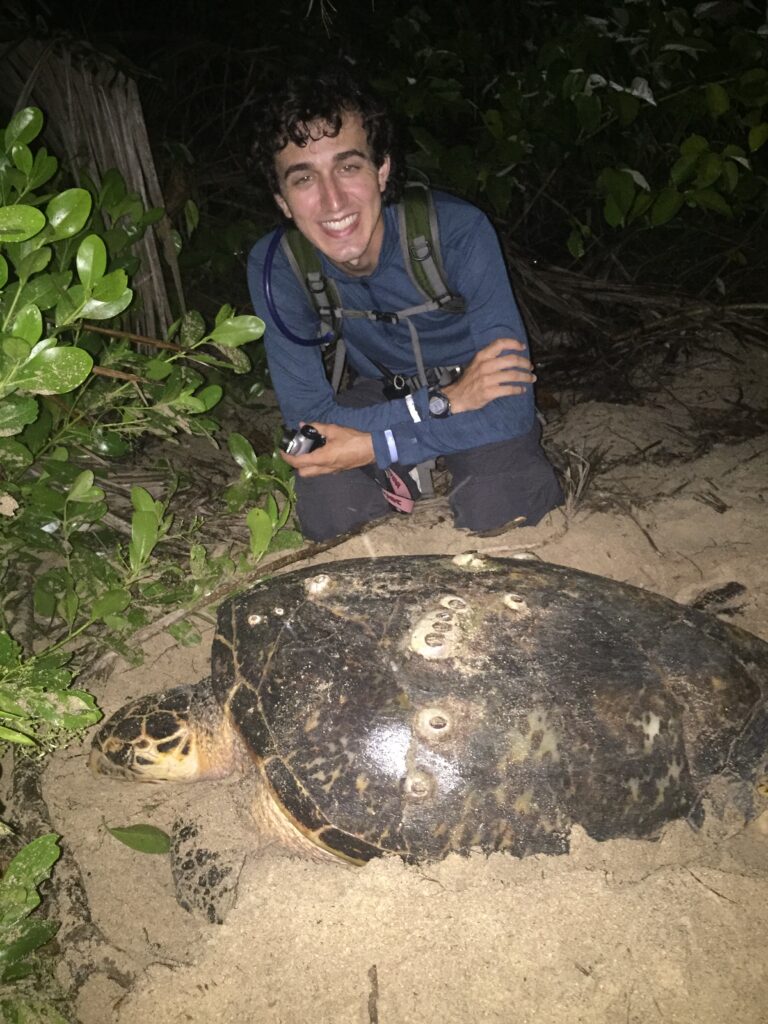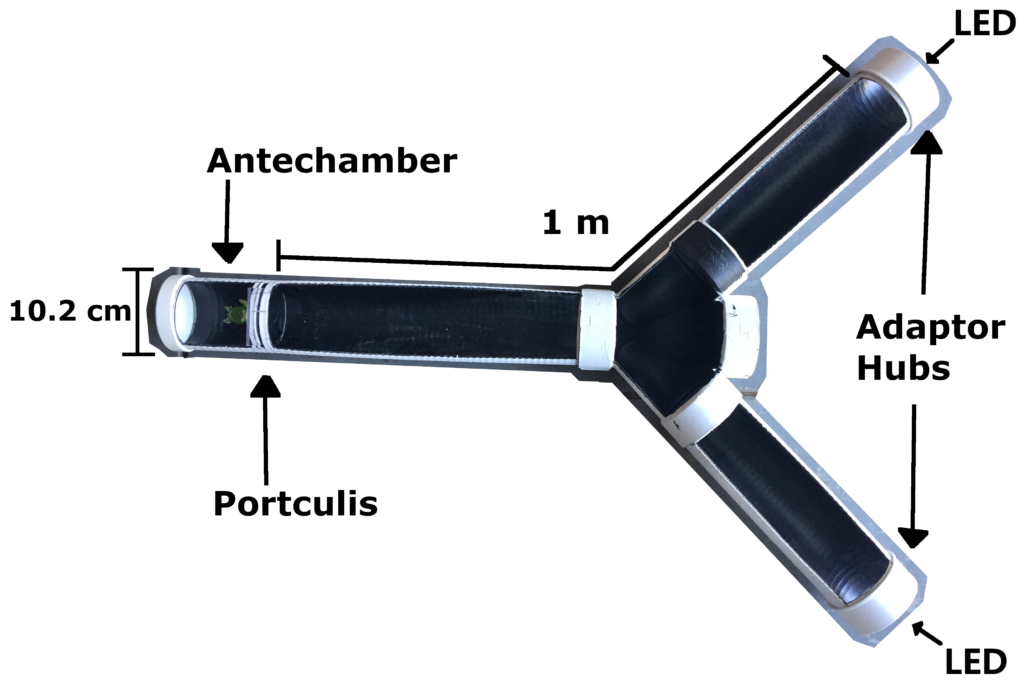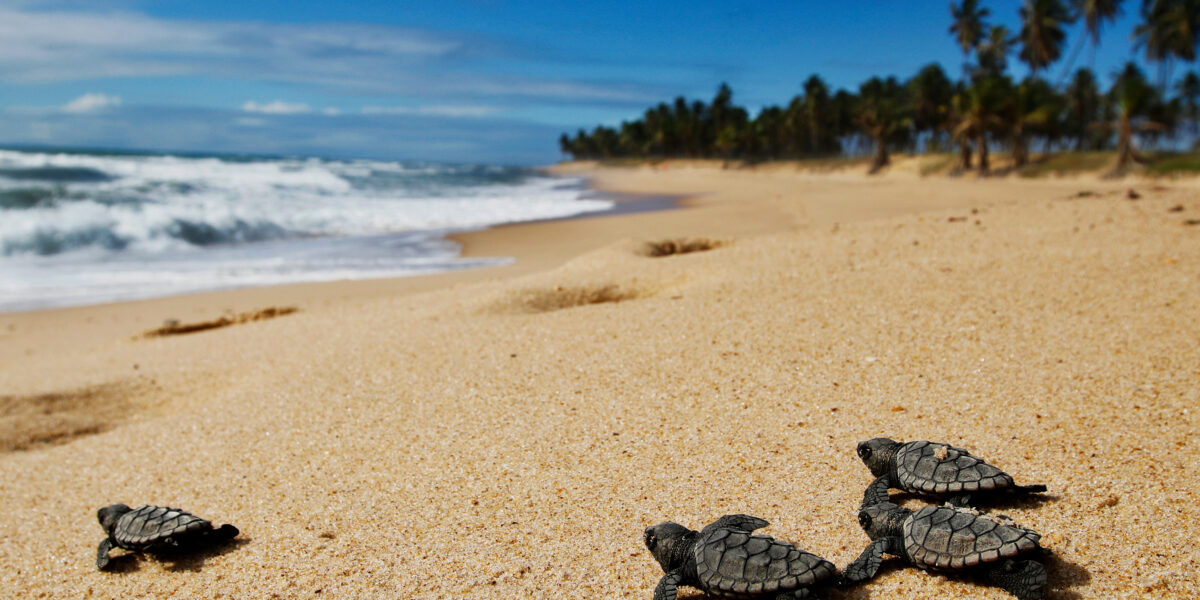
Every year, the Boyd Lyon Sea Turtle Fund hosts a scholarship for a marine biology student whose research is focused on sea turtles. This year’s winner is Robert Gammariello.
Read his research summary below:
Sea turtle hatchlings find the ocean after emerging from their nest by moving towards lights near the horizon, and light color has been shown to elicit different responses, with red light attracting turtles less than blue light. However, these studies have only been conducted on a select group of sea turtle species (primarily greens and loggerheads).
Hawksbill sea turtles (Eretmochelys imbricata) have not been tested for any such preferences and, considering that hawksbills nest under vegetation where it is presumably darker, one would expect their preferences and sensitivity to light to be different from other species. This has ramifications for implementing turtle-safe lighting, since what is safe lighting for greens and loggerheads may not be safe lighting for hawksbills.
My project has two aims:
- to determine the threshold of detection (light intensity) that elicits a phototactic response from hawksbill hatchlings across the visual spectrum, and
- to determine if hawksbills show the same preference for shorter wavelengths (blue) of light compared to longer wavelengths (red) of light.

The procedure for both of these aims is similar: a hatchling hawksbill is placed into a Y-maze, and after a period of acclimation, allowed to orient within the maze. For the first aim, the hatchlings are presented with a light at the end of one arm and darkness at the other end. If the hatchling can detect the light it should move towards it. We lower the intensity in subsequent trials in a step-wise manner until the hatchlings are no longer moving towards that light. The lowest value that a hatchling moves toward is its detection threshold for that color of light. We then repeat this process for multiple colors across the spectrum.
For the second aim, we present the hatchlings with two different colors of light at these threshold values, to determine a preference based on wavelength. We will also present hatchlings with red-shifted light at double the threshold value to see if relative intensity is the driving factor in orientation, rather than color.
The greatest benefit of this research is that it can be used to inform sea turtle-safe lighting practices for hawksbill nesting beaches.







